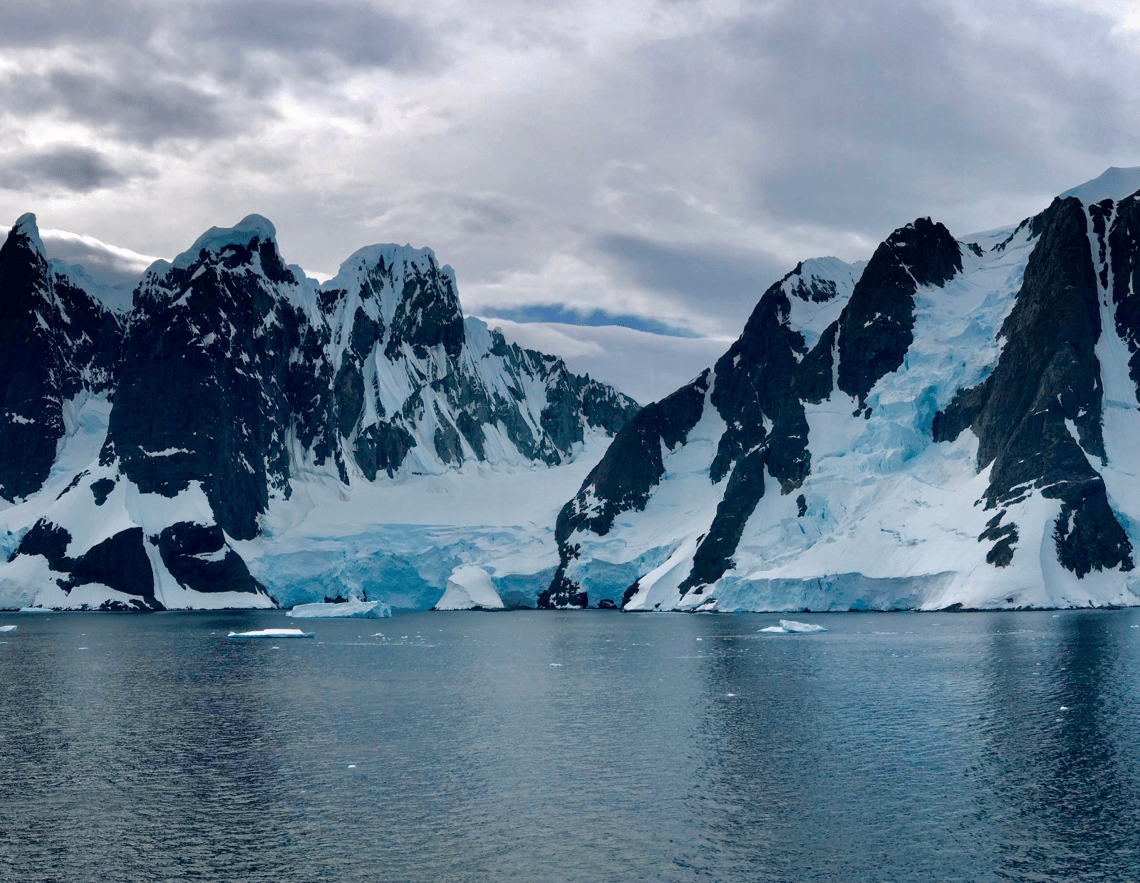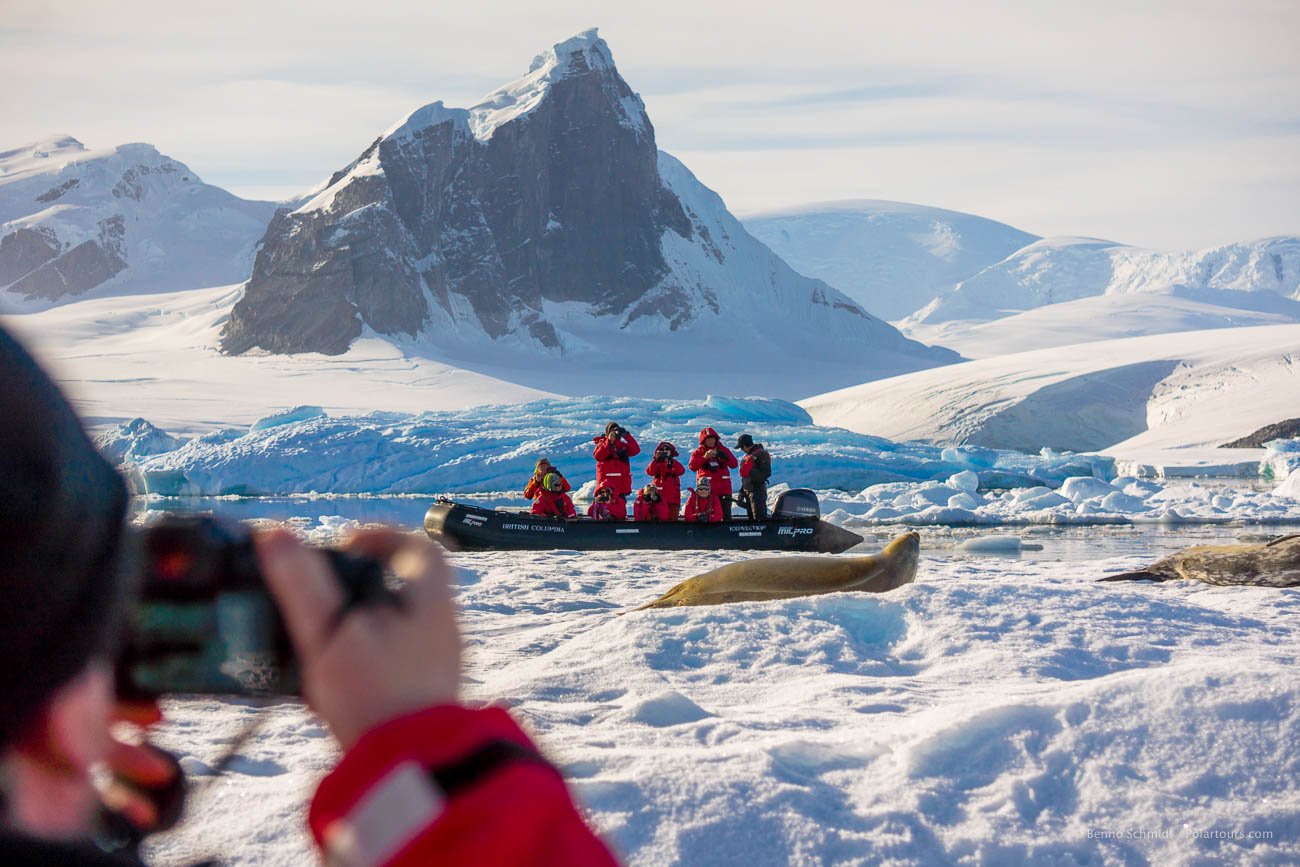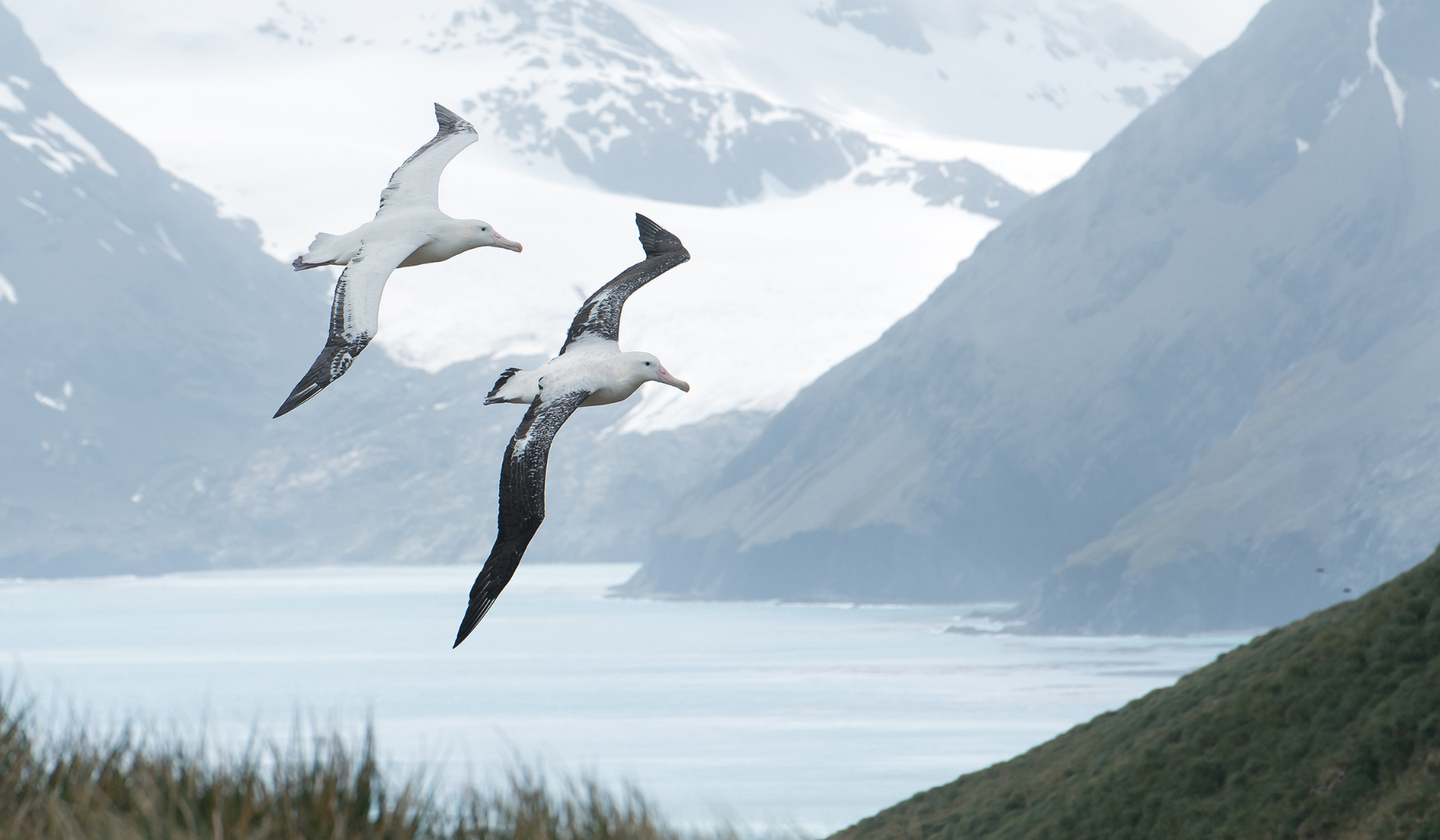The seventh continent was discovered and charted very late in human history and still has an aura of mystery about it. Many ideas have been projected onto the blank canvas of Antarctica, and a few myths persist. So, let’s take a closer look and separate fact from fiction.
Myth #1: Antarctica is humungous

It’s not really as enormous as it looks on the map—the big white space appears because a map is a projection and the regions at the poles get distorted when represented on flat paper instead of a sphere. Antarctica is the fifth-largest continent, a little more than 1.5 times the size of the United States. Which is more than enough to explore.
Myth #2: Antarctica is unbearably cold
While a record low temperature of -193° F (-89.4° C) has been recorded, Antarctica shows her gentler side during a few brief months of summer, when temperatures range from -35° F to 46° F (-2° C to 8° C), which most people find bearable. In fact, some of the crazier visitors even like to go swimming then.
Myth #3: Antarctica is flat

The very first sighting of Antarctica was of snowy mountains. Admittedly, there are some spectacularly flat parts, such as the colossal Lambert glacier in East Antarctica, which is 50 miles wide, over 250 miles long and 1.5 miles deep. But more than half of the land mass in Antarctica lies 6,560 feet (2,000 meters) above sea level, making it the highest continent in the world. The mountain ranges are around the edges, on islands, between East and West Antarctica and along the Antarctic Peninsula. However, it is not the highest continent because of these spectacular mountains, but because of the thickness of the ice sheets surrounding them.
Myth #4: Antarctic terrain is tundra
This is not true, as the term tundra refers to a specific kind of soil condition found in northern climates—rolling hills with black soil and frozen subsoil on which lichen and small shrubs grow, but no trees. Antarctica is, however, the biggest desert in the world. This may seem surprising, but a desert is defined as anywhere with less than 10 inches of precipitation a year.
Myth #5: You cannot visit Antarctica

It’s often reported that there are severe restrictions on entering the Antarctic circle and that you are not allowed to visit the ice continent. However, while there are strict rules about how many ships or people can be where and when, and how travelers must behave while there, a reputable tour operator will always obtain the necessary landing permits and adhere to all IAATO guidelines. Polartours is committed to nature conservation and, among the boat crews, there are many scientists who have dedicated their lives to studying marine life and the continent.
Myth #6: The Antarctic is low on biodiversity
While East Antarctica is permanently covered by an ice sheet, except for some small coastal areas, and lacks trees and shrubs, there are still plants such as grasses, algae, moss, and plenty of microorganisms living inland where the climate is harshest. The waters surrounding Antarctica are also extremely rich in life. Krill are tiny crustaceans and especially abundant when their food source, algae, starts to bloom under the ice—at which point the krill attract abundant wildlife, including large marine mammals which feast on them.
Myth #7: Penguins live—where, exactly?
-2.jpg?width=1600&height=1240&name=antarctica%20(2)-2.jpg)
Most people now realize that penguins do not live at the North Pole. But many people still think that there are penguins living at the South Pole, perhaps because of some confusing images in popular culture. They actually live in coastal regions, especially the Antarctic Peninsula and on the shores of the spectacular Ross Sea and Weddell Sea.
A related myth is that polar bears eat penguins. While they would probably jump at the chance, they live too far away for this to be practical—on the other side of the globe, in the Arctic, not Antarctica. Unlike in the Arctic, where there are foxes and bears, there are no land predators in the Antarctic—which is why the penguins and seals are so unafraid of, curious even, about humans.
Myth #8: Antarctica is uninhabited
Although there are no permanent settlements, there are some research stations where scientists live for extended periods. A must-see is the historic “Base W” on Detaille Island, which dates back to 1956 and is preserved intact, as well as the active summer research station at Ardley Island.
Myth #9: The names Antarctica and the South Pole mean the same thing
True, the South Pole is found on the continent of Antarctica, but it is a specific geographical point in East Antarctica—or rather, two points: there is the south geographic pole, the point at which the planet rotates on its axis, and also the south magnetic pole, where the geomagnetic field lines of the Earth travel towards the surface of the planet.
Myth #10: The only birds in Antarctica are penguins

Penguins are synonymous with Antarctica, yet only emperor and Adélie penguins are permanent residents of the continent. Other species, such as chinstrap, gentoo, and macaroni, breed on the Antarctic Peninsula or sub-Antarctic islands. Penguins are fantastic swimmers and hunt krill, fish, and squid. They have evolved to become flightless for two reasons—flying requires a huge amount of energy, and they do not have any natural predators on the ice of Antarctica.
There are, however, predators in the water, most notably leopard seals, which are very efficient hunters. There are also orcas in oceans all over the world, including in the Antarctic waters. Although they have a reputation for being apex predators that hunt in packs to feed on seals and penguins, some orcas primarily eat fish.
There are many more species of birds in Antarctica, a couple of them native to the region, such as the snowy sheathbill and the iconic wandering albatross, and others that are seasonal visitors.
Myth #11: Seals and sea lions are shy and avoid humans
This is not true in the Antarctic since they have no natural surface predators—and so thrive and are not afraid of humans. Seals are pinnipeds, meaning “flipper-footed,” as are sea lions and walruses, and Antarctica is home to half the world’s population of these marine mammals. They breed on fast ice, which is the ice attached to the coastline (as opposed to floe ice). Antarctic fur seals, for example, crowd the beaches in the breeding season (November), delighting visitors with the sight of their pups in January and February. While in the Arctic seals are likely to dive into the water, if you come within 300 feet of them, in Antarctica you can get quite close. They also do not hide their pups in lairs like in the Arctic, but birth them out on the ice.
Myth #12: Visiting the Antarctic is expensive
It’s often said that as Antarctica is so remote, it is extremely difficult and expensive to visit. This myth is easy to debunk, as there are plenty of expedition tours with surprisingly accessible prices. Take a look at some of our cheapest Antarctica cruises or check out our discount cruises for some great last-minute deals. Or, at the other extreme, you could go all out on a luxury Antarctica cruise.
To find your best option, arrange an obligation-free consultation with our experts!





